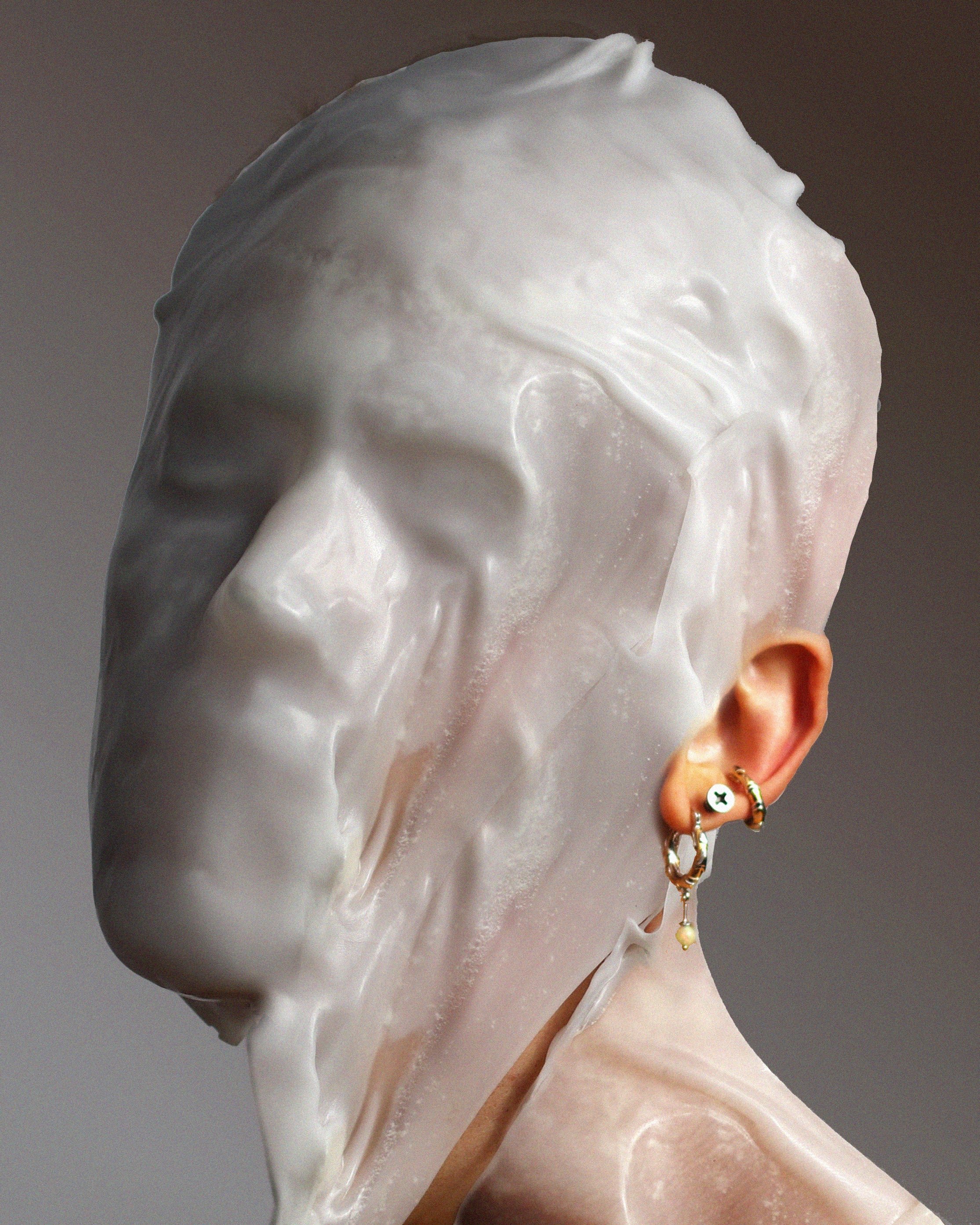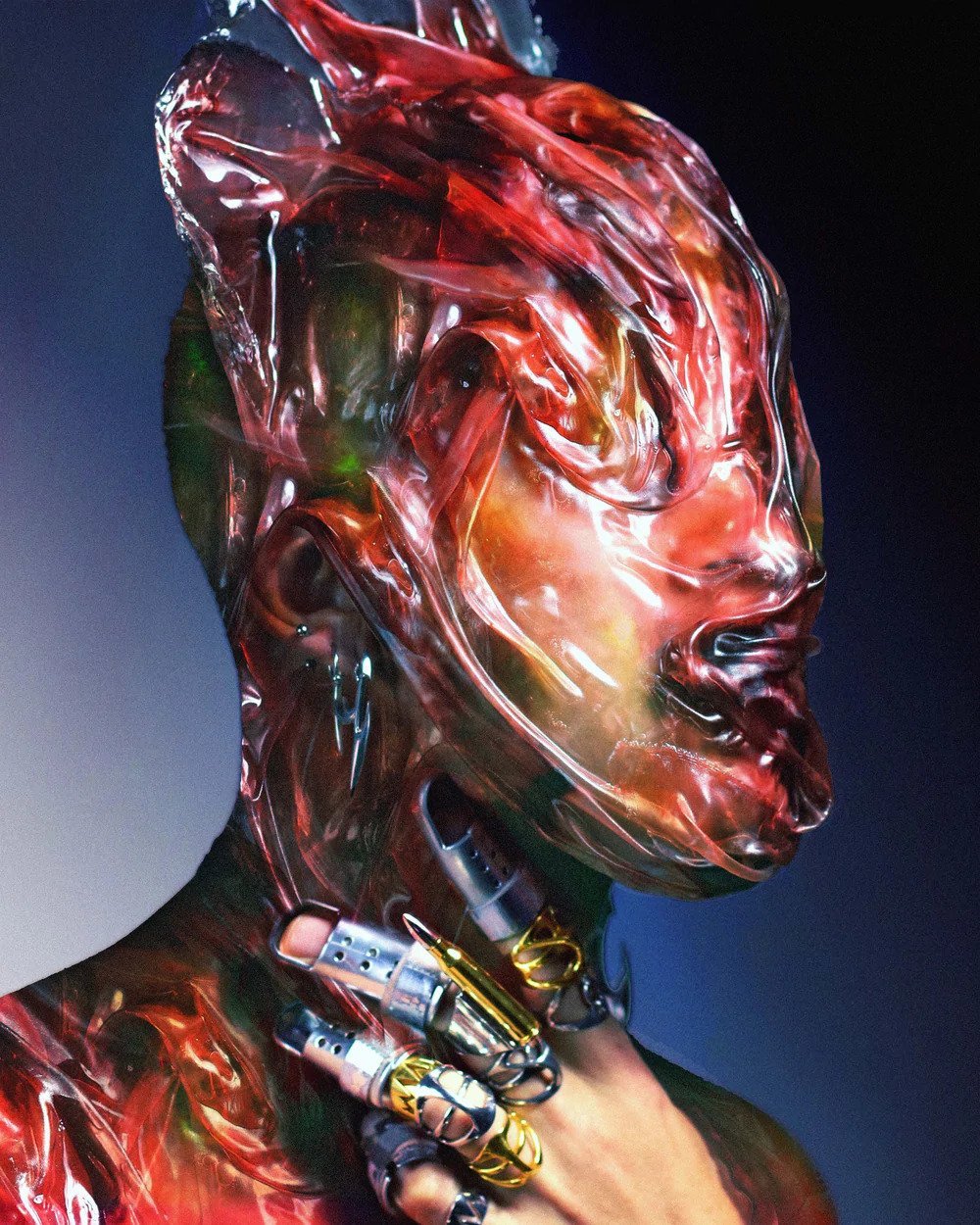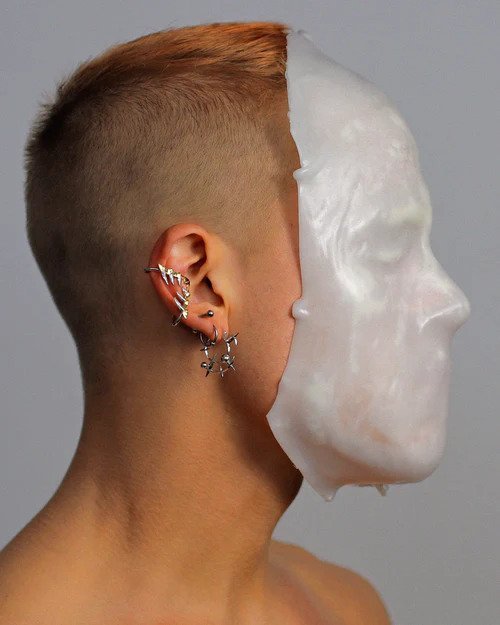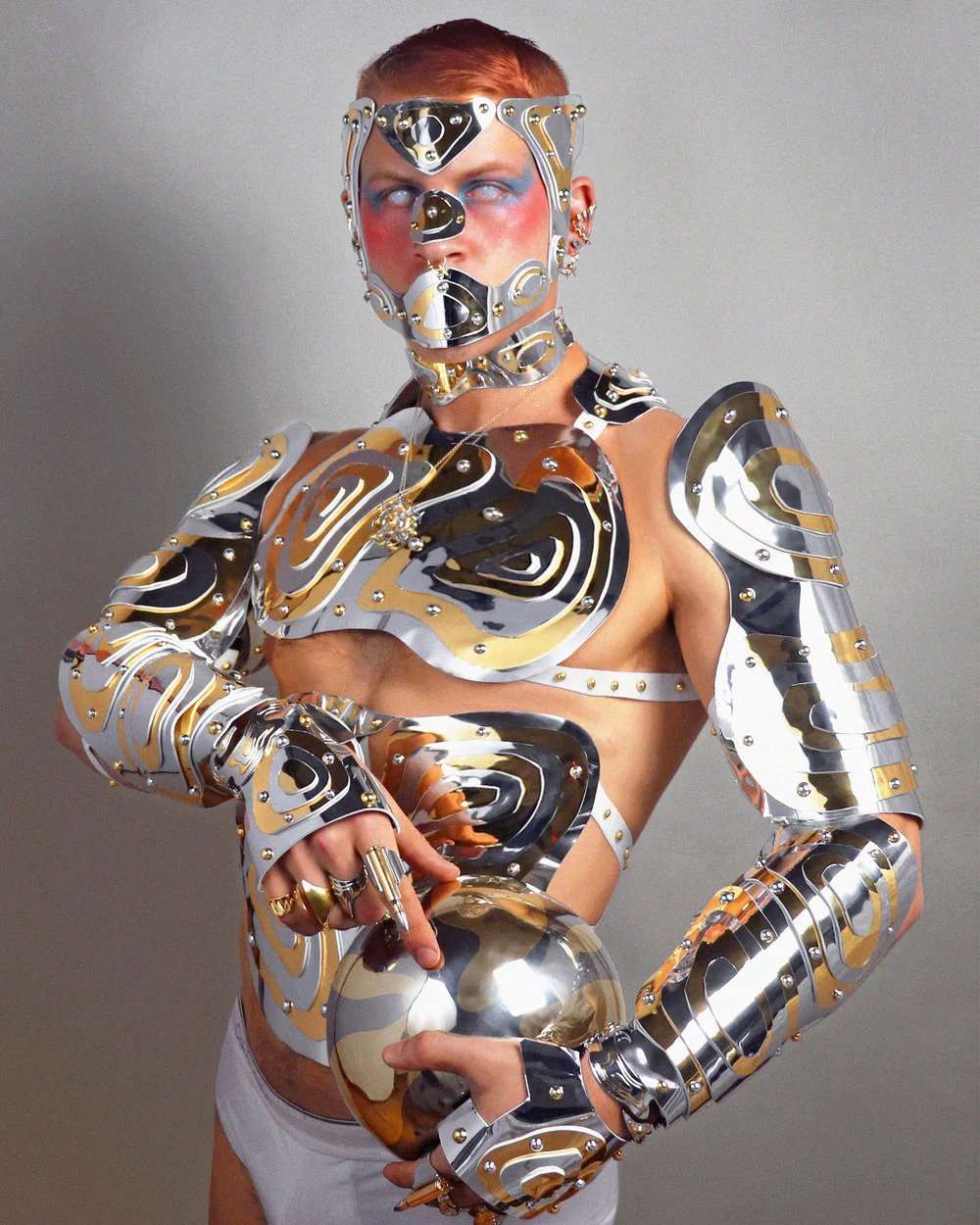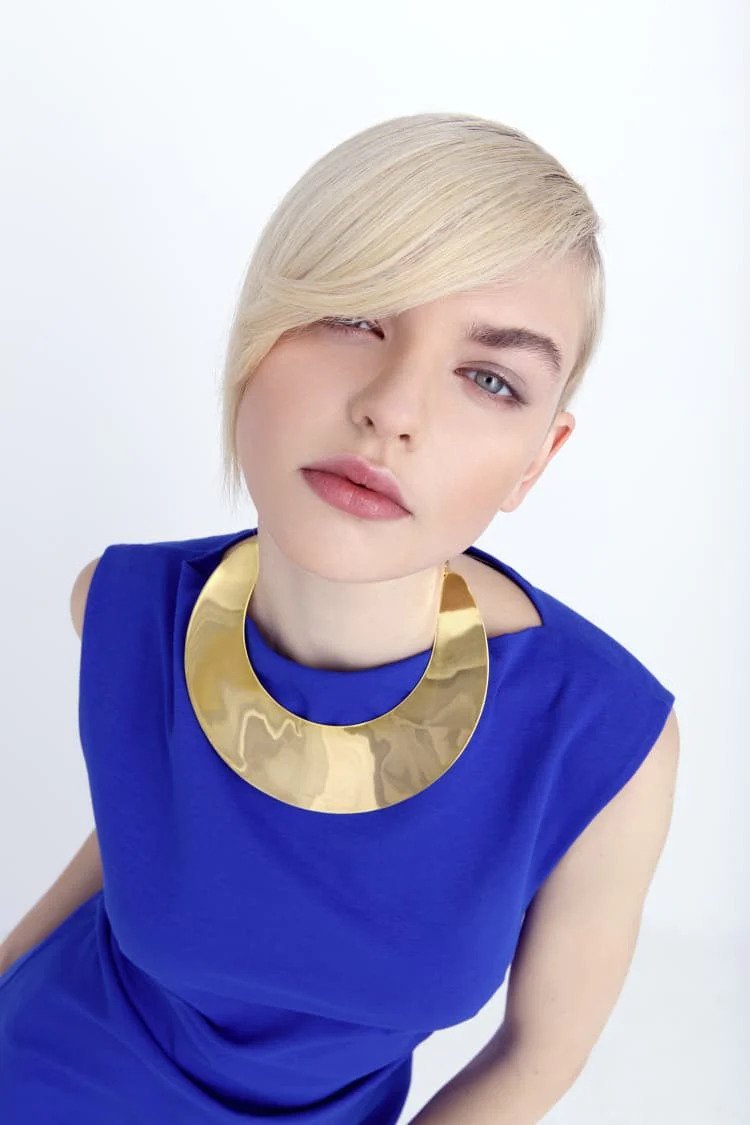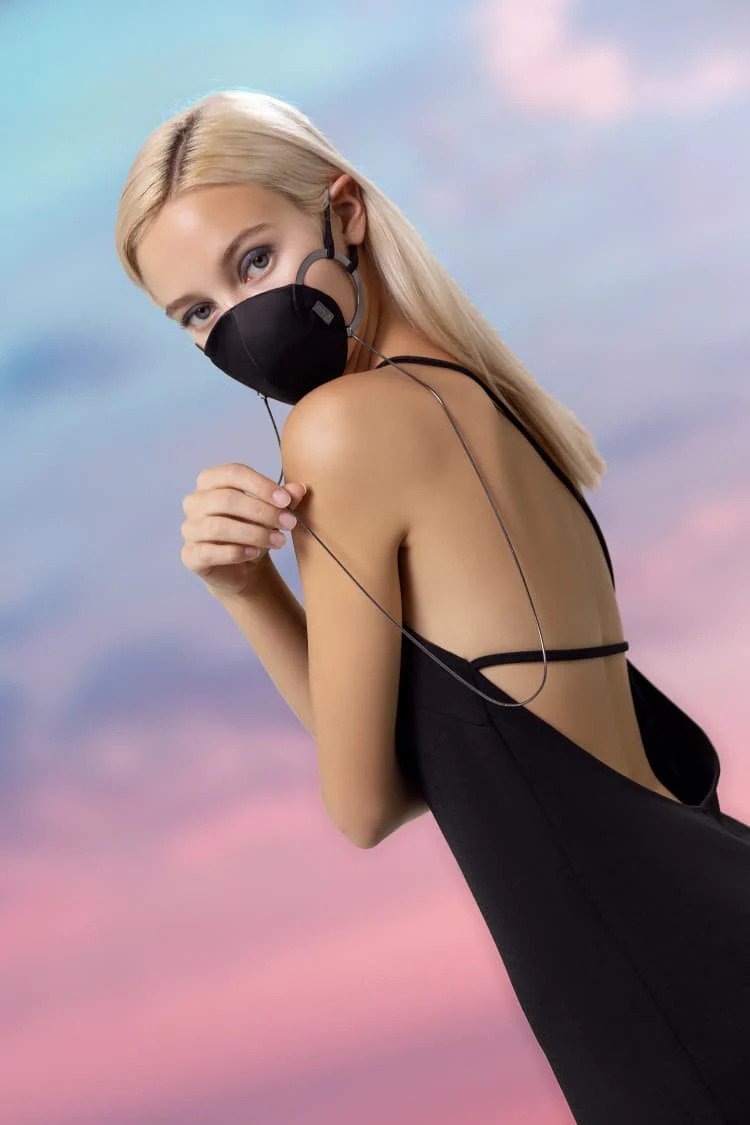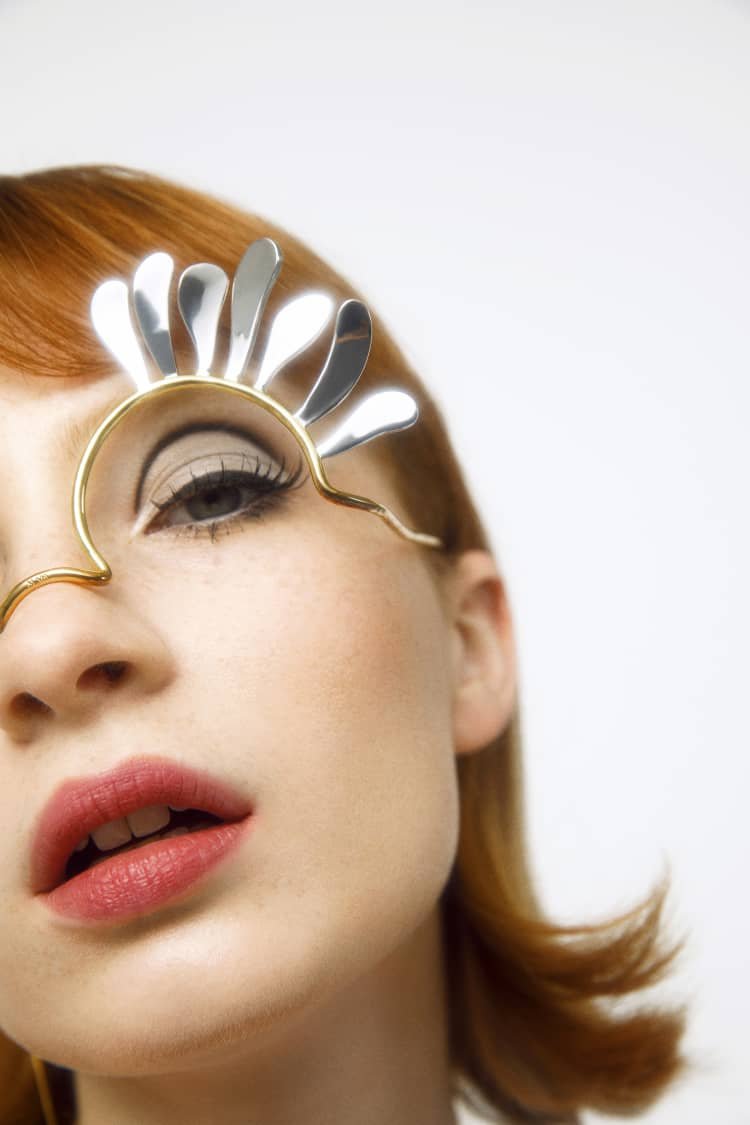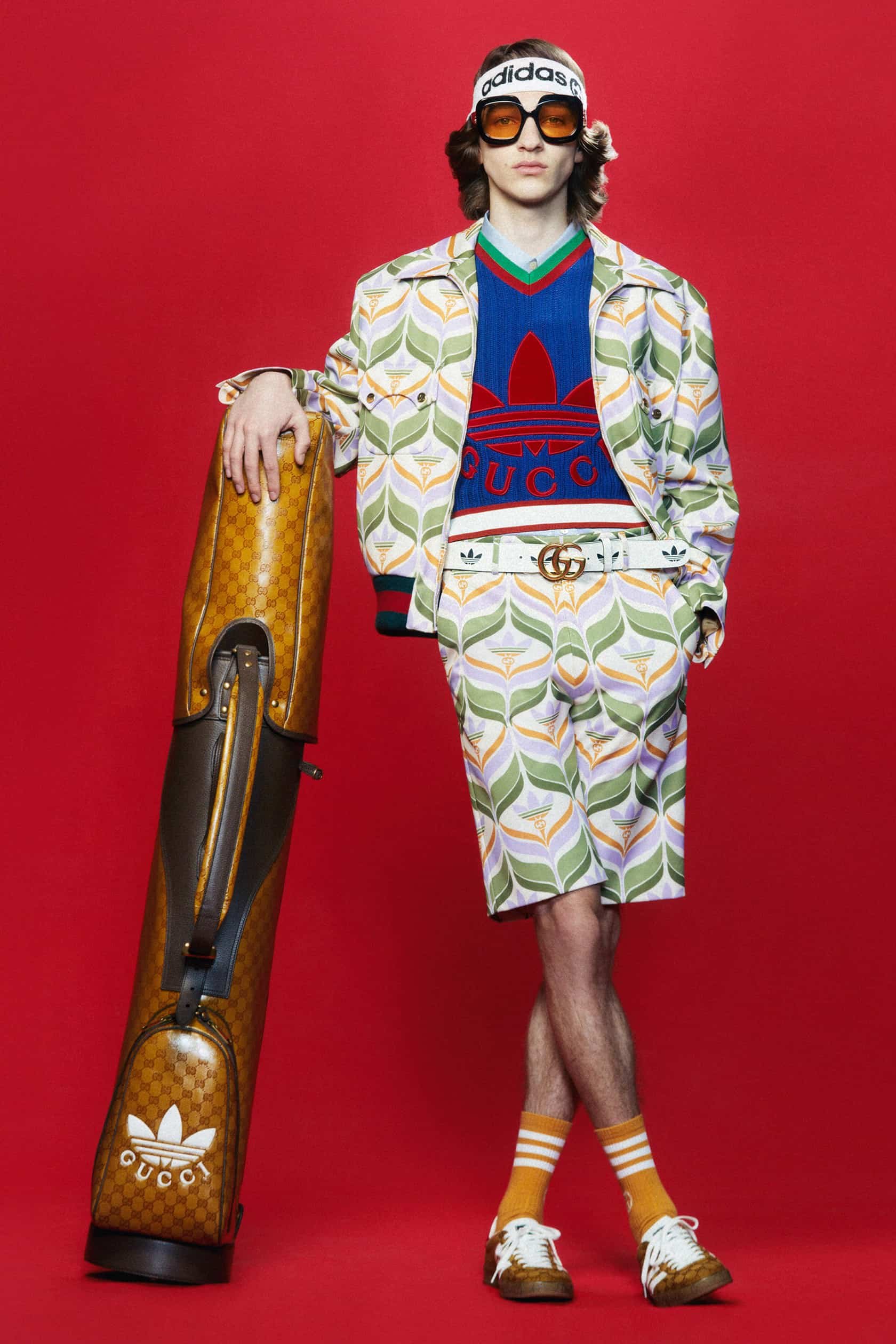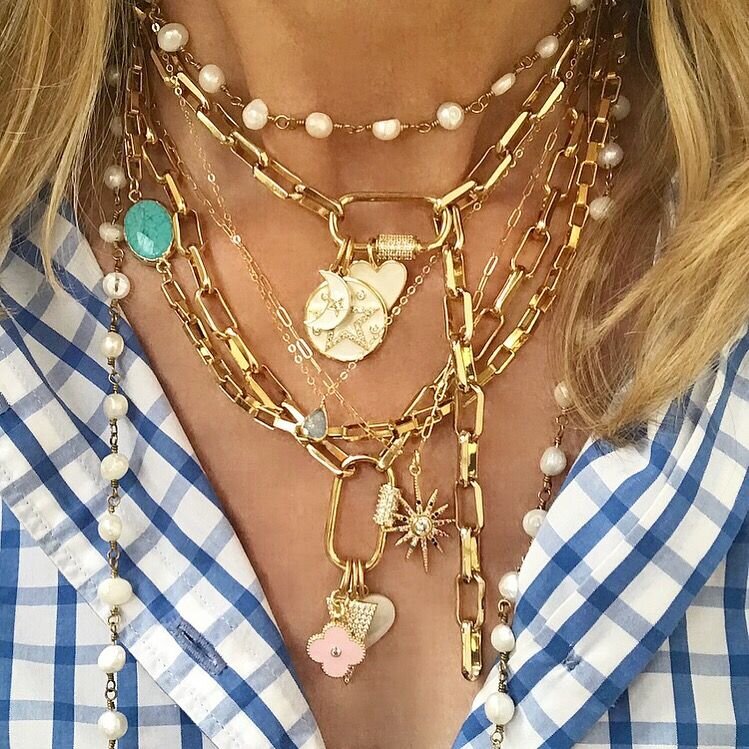The concept of covering one's face when out in the world; is far from new or original. Modesty culture is old. The intention of hiding something from surrounding strangers is one that many fashionistas not following modesty culture have struggled to understand. Modesty culture is alive and well but intersects with global trends less and less, and most people would not associate the majority of the global fashion scene with strict rules about how long a skirt should be.
However, partially concealing one’s face for non-modesty purposes is a relatively common trend that has been cycling in and out of fashion for a long time. Visards, for example, were black velvet masks worn by upper-class women in the 16th century, held in place by clasping a bead in one’s mouth, which differed substantially from modest face coverings. They afforded the wearer anonymity rather than modesty; thus, some safety and freedom for the women who wore them, whose behaviors were meticulously scrutinized and potentially put them in danger were their identities known.
Another, more recent example (though we may not necessarily think of them as such) is the side-swept bangs of the 00s. Here the primary aim is certainly not anonymity nor modesty (except maybe for the lucky few of us with uncharacteristically seductive foreheads). It is hard to argue that the side bangs are not a purely aesthetic choice, and it is notable they cover around the same surface area of the face as surgical masks. We may not consider them accessories per se because they are hairstyles; nonetheless, they were used to conceal a part of the face for aesthetic purposes and thus apply for the purpose of my trend prediction here.
image via
Then, of course, there is the elephant in the room - surgical masks. During the pandemic, face coverings were ‘trending’ out of necessity rather than a design choice, but many people from non-modesty backgrounds "spoke up" during this period of time about the liberation of keeping one's face hidden from strangers. Samantha Matt tweeted in June 2020: “Idk why people are against wearing masks. Masks protect you from coronavirus, yes, but they also protect you from running into people you know in public. Add sunglasses, and you are literally in disguise. It’s safe to do anything, anywhere, even in your hometown. This is my dream.” Psychologically, anonymity in such an intrusive world is always nice. Still, there are aesthetic/ fashionable reasonings behind this preference reflected by the barrage of branded, custom, patterned and colorful masks that followed the collective desire for safety.
The distinction here is important, as we did not pick masks because they were pretty. Since we were stuck with them, pretty and expensive masks were made. Nonetheless, the majority of the world experienced the regular and consistent use of this accessory for at least some time. The face coverings I am writing about are a far cry from these practical items but are their descendants. In 2023, most places no longer mandate masks, and most people no longer wear them. Why when given the freedom to choose how much of our face we want to show, would we choose less and not more?
image via
There is rarely a clear preference in fashion for modesty (loose and thick fabric with lots of coverage) or transparency (sheer and tight fabrics with little coverage). Most people find some balance between the two to be the most appealing (think small top big pants). Hence there is no inherent reason to prefer either face out or face covered fundamentally, but the time is right for us as a culture to enjoy a bit of mystery around the face.
It is well-documented that fashion is cyclical. Earlier I mentioned a few of these early inspirations, the most recent being side-swept bangs. Having been out of style for just under 20 years, those bad boys are right on time for a reinterpretation. While some might say that a reinterpretation of one style of bangs is a different style of bangs, we sure have had a variety of styles since then. I would argue against that, as none of the more modern bang trends have had this determination to conceal the face. Rather bangs today are focused on framing and are frankly far too light and subtle to be considered in the same genre as the side swept. No, we as a culture are still looking for a reinterpretation to take the world by storm, and I believe with face coverings, the wheels are already in motion.
The timing is also perfect if we consider the very well-documented roaring 20s theory, which suggests that ‘the 20s, as a consequence of the isolation and tragedy of the pandemic coupled with the poor state of the economy,y would be a decade of extremely vibrant and over the top fashion trends. Indeed, the worse things get, the harder we go with the fits - this has been recorded post both World Wars and other disasters. A big part of being over the top is more accessories. The face provides more space for accessories. Hence- match made in heaven. This is further backed up by the increasing popularity of similar ‘concealing’ accessories - most prominently gloves and leg warmers, which, much like the face coverings primarily add complexity and texture to an outfit.
Throughout this article, I have been using the vague term ‘face covering’. Living post-pandemic, masks no doubt most readily come to mind, but that is not at all the interpretation I believe will be the ‘it-face-covering’ of the decade. Allow me to introduce below some designers and items spearheading the trend, that might perhaps convince you to hop on.
Austin James Smith
A jewelry artist, much of who’s work covers and alters the face, AJS’s vibrant and freaky jewelry gets to the heart of both the anonymity and opulence of face coverings explored in this article.
MAM
MAM offers more wearable luxury face coverings and is a great opposite of AJS in its sleek aesthetic. I especially love the glasses shown and hope to see this interpretation of the face covering gain traction this year.
Gucci X Adidas
Though not classically known for their jewelry, the recent 70s-inspired collab of the brands gave is plenty of oversized sunglasses and visors that hide the face. Even more wearable than MAMs jewelry, this is the point in the trend that I believe we are at right now, with more conventional accessories being exaggerated and refined in a modernization of the trend of the 70s.



